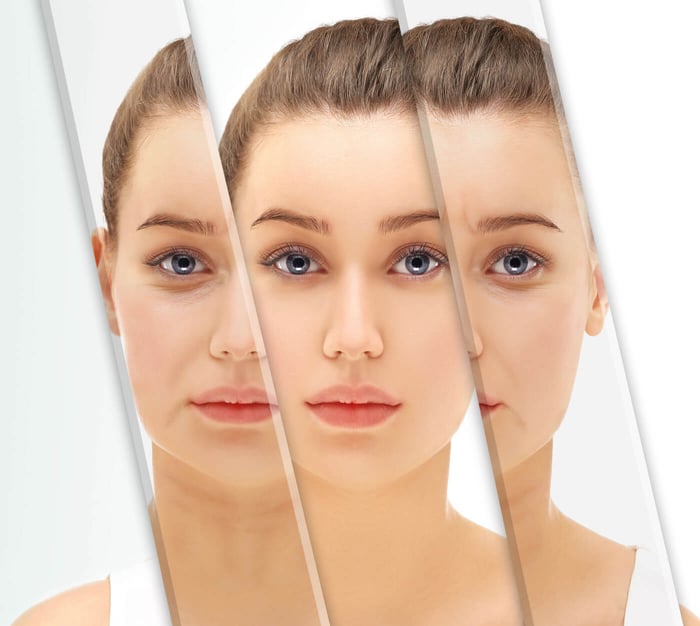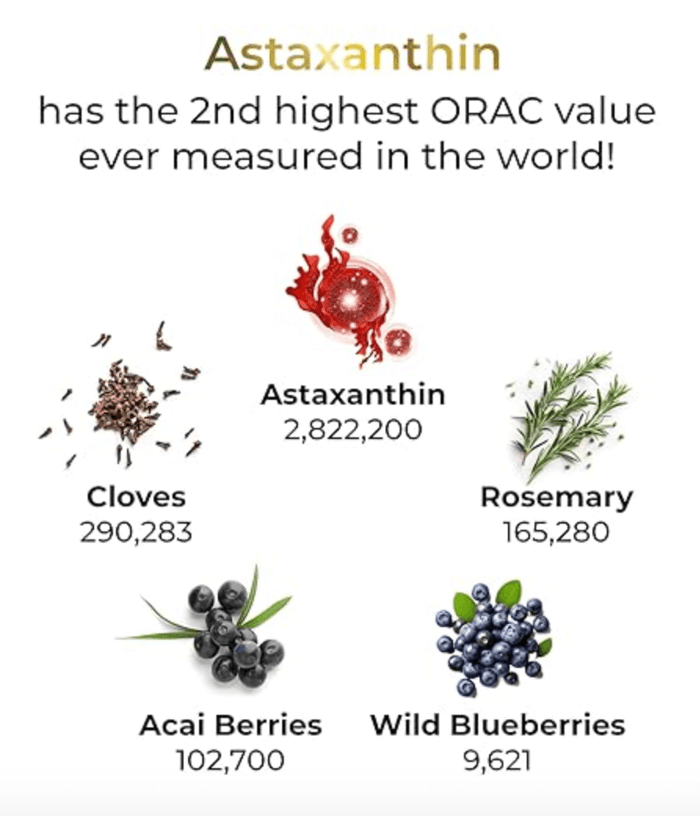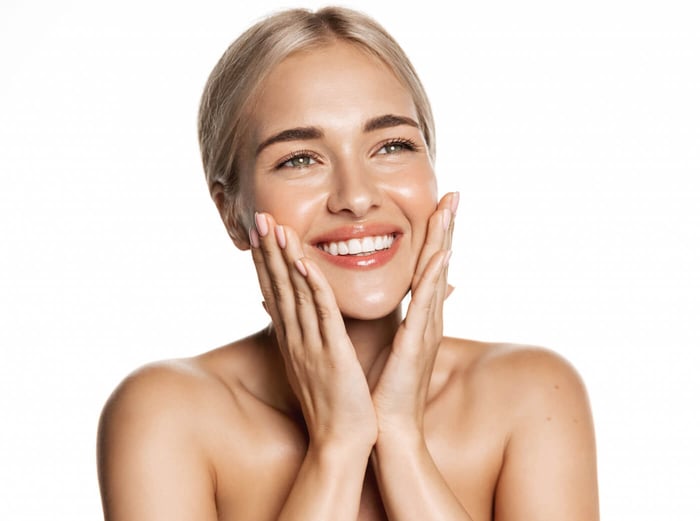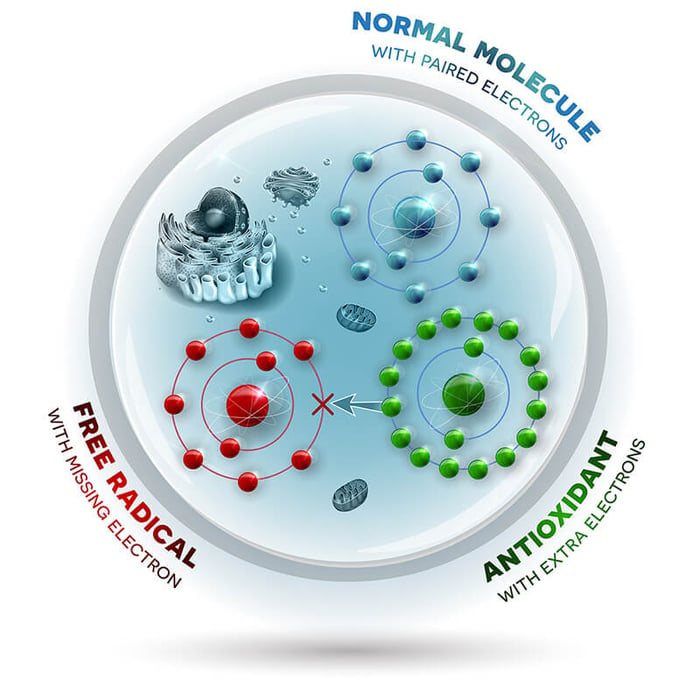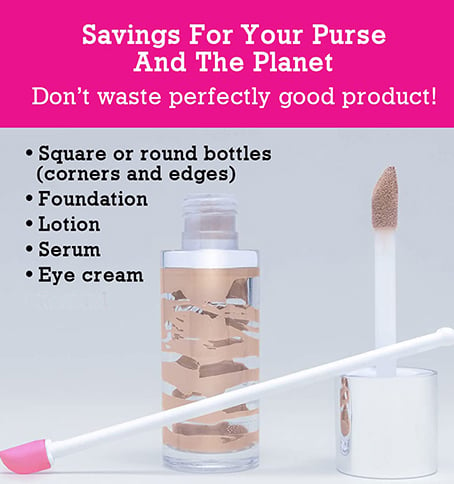Oxidative Stress and Skin Aging: Here’s What You Need to Know
When you look at your face in the mirror and inspect your skin, you probably aren’t thinking about oxidative stress and aging. After all, unless you’re a biochemist, oxidative stress is probably not a phrase in your vocabulary. But as someone keen on beauty, skin health, and healthy aging, I want you to know about oxidative stress and aging.
What is oxidative stress?
Oxidative stress is caused by molecules called free radicals. These highly reactive chemicals steal electrons from healthy molecules in your cells, making those molecules reactive as well.
We are exposed to free radicals all the time, from blue light from screens, stress, EMFs, UV, air pollution,[1] x-rays,[2] pesticides[3]—all sorts of things that we come into contact with daily.
Free radicals aren’t all bad. Oxidative stress is a natural process in our bodies, and our bodies know how to deal with it. So when we are exposed to free radicals from healthy things, like exercise, we will dispose of the free radicals naturally.
However, too much oxidative stress can overwhelm our system. The problem comes when we are exposed to too many free radicals from unhealthy sources. When this happens, the free radicals start breaking down our cells and harming our DNA.[4]
This overload of free radicals damages and ages every cell in your body, including the living cells in the deep layers of your skin. Connective tissue breaks down, discoloration occurs, skin texture changes, and your skin cannot work efficiently to recover. To take care of your skin, you must take care of your cells.
Antioxidants are the antidote.
Antioxidants are the antidote to free radicals and oxidative stress, which is why I love them so much.[5] These chemicals—antioxidants—react with free radicals and neutralize them. They do this by giving them electrons without themselves becoming reactive. Kind of cool, huh?
Just as your body produces some free radicals, it also produces some antioxidants to control them. But with the overload of free radicals most of us are being exposed to, we have to take in extra antioxidants and use them topically in the form of concentrated high ORAC value serums.
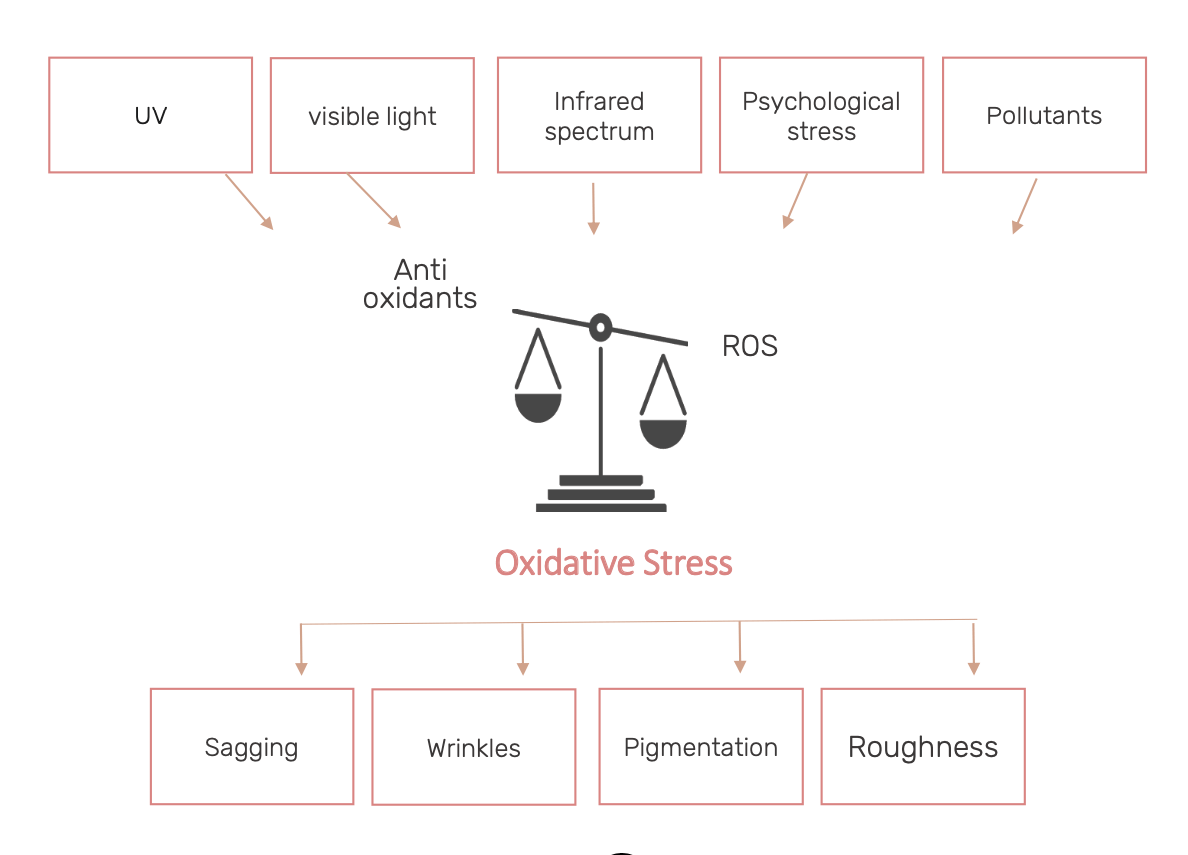
Pesticides can be very harmful sources of oxidative stress and have been shown to damage the DNA of agricultural workers exposed externally to them.[6] You definitely don’t want to eat food grown with pesticides. You also don’t want anything that contains pesticides on your skin. As hard as it can be to avoid, it’s essential to avoid food that isn’t organic.
Other exposures that cause oxidative stress and skin aging
Our skin is exposed to a broad spectrum of light, both lower and higher energy than we can see with our eyes. Ultraviolet light (UV) is light that is not visible to us. Blue and violet light are the highest-energy light we can see.
The higher the energy, the more potential for damage. UV light has even higher energy than blue light. Remember that anything higher up the electromagnetic spectrum can harm your skin. Even higher up the spectrum is X-rays that radiate from the sky. These can also damage your skin and DNA, especially when you are higher up in the atmosphere, such as during air travel.
Sunscreen works by reflecting different frequencies of UV light. Even when sunscreen looks clear to the naked eye, the UV light bounces off it. Traditional sunscreens were designed only to reflect what scientists call “UVB” light. But “UVA” light, which these sunscreens do not reflect, can also cause oxidative stress and skin aging. That’s the thing: UVB and UVA light can harm your skin.
As a visible blue light, which is very close on the spectrum to UV, you know already that blue light can disturb your sleep and harm your eyes, especially when you spend a lot of time on the computer and your cell phone throughout the day. But you may not know that blue light can also damage your skin.[7]
The reason is that all these light frequencies can potentially create free radicals in the skin cells. They do this by freeing electrons from healthy molecules. This process (of changing the electron structure of an atom) causes a domino effect that leads to harm.
Sunscreen can also contain many chemicals you wouldn’t want to absorb into your body, especially when trying to optimize your cells' health.
Beyond sunscreen: topical antioxidants shield your skin
Sunscreen sits on the skin's surface, forming a barrier on top of it. But sunscreen applied topically is constantly being scraped or sweated off. Topical antioxidants, conversely, can seep into the skin, giving deep protection that goes below the surface.
Astaxanthin, which is naturally produced by algae to protect them entirely from the sun, is one of the most potent antioxidants in nature, hundreds of times more powerful than blueberries or vitamin C.[8]
Astaxanthin, which I love, can give your skin the deep protection it needs from every type of light while neutralizing free radicals from every source you are exposed to.
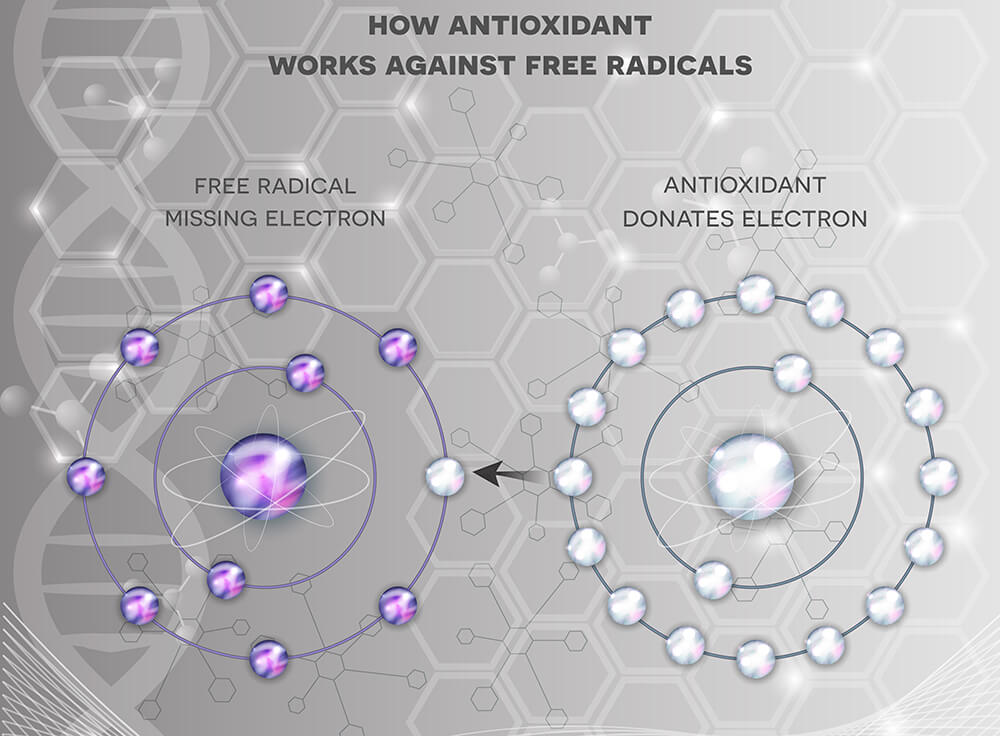
Using Topical powerful antioxidants like astaxanthin that comprehensively protect your skin from oxidative stress and free radicals is cutting-edge technology.
Only High ORAC value antioxidants are used in Luxe Beauty's concentrated antioxidant serum:
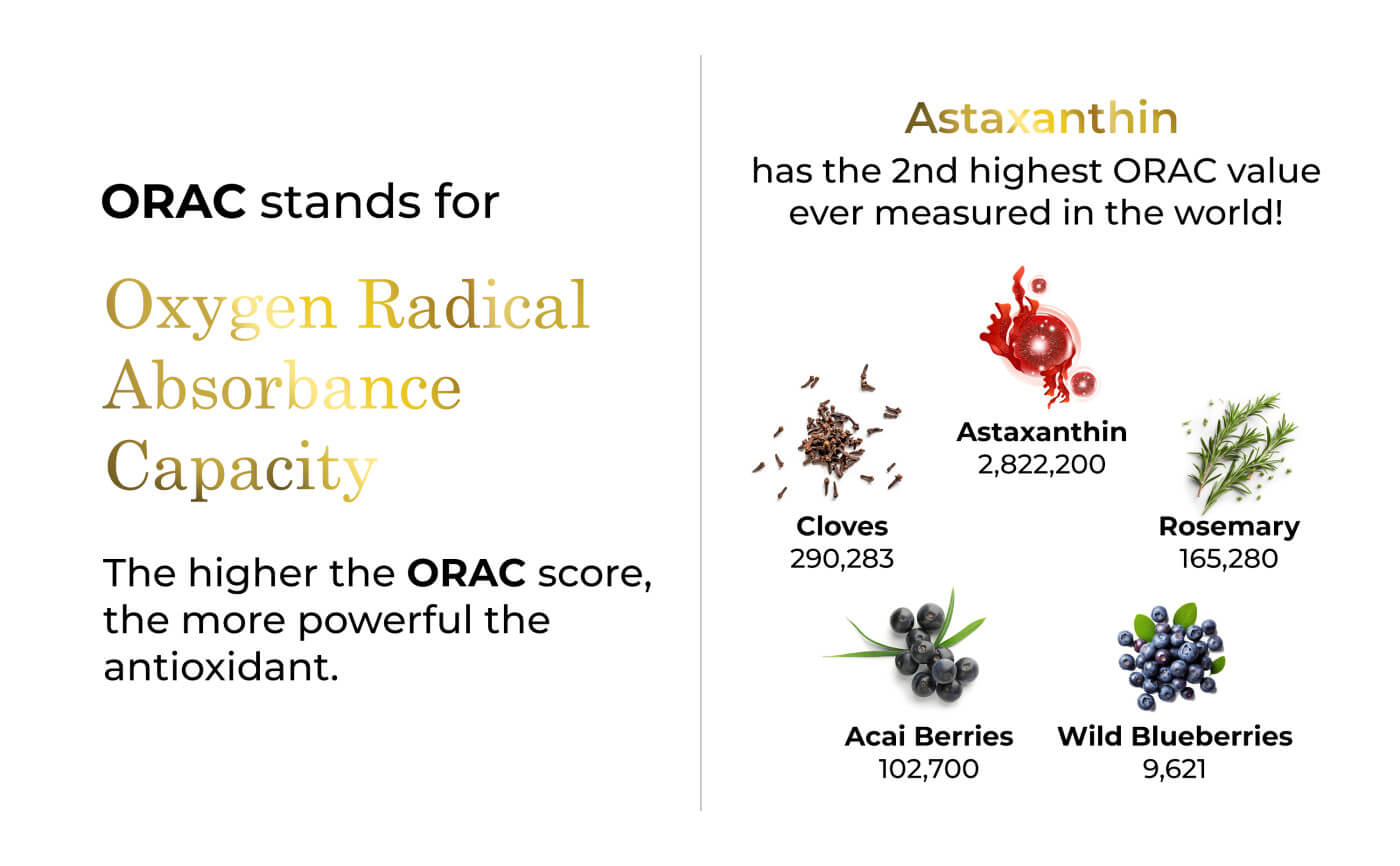
$81.00
Powerful Organic Antioxidants, a vial more extraordinary than gold! Glow Power Pure Concentrated Antioxidant Serum is uniquely formulated with the most potent, rare, and organic antioxidants created by nature—Powerhouse active antioxidant ingredients with no fillers. Antioxidants are the most effective defense… read moreConcentrated Antioxidant Glow Power Serum

Consuming high-antioxidant food can protect your whole system
When we care for our skin, most of us focus on the surface. That seems to go without saying since the surface of our skin is what we see!
But these surface layers of our skin, an essential organ part, are already dead. The living, growing part of the skin is the deep layers underneath.
Those layers are alive. You can only get to them from the inside of your body. Things that enter your bloodstream affect these layers of your skin. That’s because capillaries perfuse the living skin, giving it the nutrients it needs to be a thriving organ.
That’s why nourishing your system with potent antioxidants can prevent oxidative stress and skin aging through every cell in the organ.
So this is the natural way to protect our skin: block harmful light rays, soak antioxidants into the skin, and fill the skin cells below the surface with health-giving antioxidants. The single most potent antioxidant that can do all of these is astaxanthin because it blocks the right frequencies of light. A topical skin protectant made with astaxanthin allows this antioxidant to soak into the skin. Astaxanthin can also be taken as a supplement.
Many of the common antioxidants people take are much less effective than astaxanthin. Some are even counterproductive.
Vitamin C supplements, for example, are usually just synthetic ascorbic acid produced from GMO corn, which can increase cancer risk,[9] interfere with metabolism, and even thicken your arteries.[10] If you want to supplement your diet with vitamin C, choose a high-quality, 100-percent organic product. Make sure the supplement's casing contains no harmful ingredients. Or, better yet, eat a diet high in healthy, whole vitamin C-rich fruits and vegetables.
I believe that eating antioxidant-rich foods is always a good idea. Did you know spices have higher antioxidant power ( ORAC Value ) than Citrus fruits, berries, and fresh vegetables?

To maximize antioxidant consumption in your food, you can’t beat spices like cloves and rosemary. These are two of my favorites. They have many times more antioxidants than berries and are usually less expensive. While cloves and rosemary are wonderful, they have only one-tenth the number of antioxidants that astaxanthin has. (See why I like them so much?)
Sleep is your friend.
When you haven’t slept well, you can see the difference in the surface of your skin. It looks puffy or dry. That clears up once you get some good sleep, but not completely—your skin is still taking a beating at the cellular level when you don’t get enough sleep. And, if you have chronic insomnia, the skin damage is more challenging to reverse.
If like many of us today, you aren’t getting enough sleep, it’s essential to audit your bedroom environment. Find ways to improve your “sleep hygiene.” This includes ensuring the room is dark and cool, removing electronics from your bedroom, and going to bed simultaneously each night.
All of this is easier said than done, I know. But sleep matters when it comes to oxidative stress and skin aging. Plus, once you get more and better quality sleep, your skin will thank you.
Time in nature
With all this talk about light exposure, you might think you should stay inside in the dark all the time. No way!
Spending time outside lowers stress levels, another direct cause of aging in the skin and every cell in your body.
We need sunlight on our skin every day. Sunshine converts into vitamin D. Optimal vitamin D levels are a key component to lifelong good health.
So it’s not that sunlight is bad. Spend time in nature! Just make sure you protect your skin inside and out when you do.
A holistic strategy to fight oxidative stress and skin aging
The best method for vibrant skin is a whole-body approach. So, let’s put all the pieces together:
- Use a maximum-strength topical antioxidant that contains astaxanthin
- Minimize your exposure to pesticides, pollutants, and high-energy light
- Consume plenty of delicious, whole foods that are high in antioxidants
- Get plenty of high-quality sleep
- Spend time every day in nature, relaxing
Once you do this, your body will feel more vibrant, and your skin will glow. You will be addressing oxidative stress and skin aging head-on. And you’ll feel more beautiful, inside and out.
[1] https://www.sciencedaily.com/releases/2021/06/210621160520.htm
[2] https://www.ncbi.nlm.nih.gov/pmc/articles/PMC3936498/
[3] https://www.ncbi.nlm.nih.gov/pmc/articles/PMC8791758/
[4] https://pubmed.ncbi.nlm.nih.gov/25906193/
[5] https://www.mindbodygreen.com/articles/what-is-oxidative-stress-and-what-does-it-do-to-skin
[6] https://occup-med.biomedcentral.com/articles/10.1186/s12995-020-00290-z
[7] https://www.allure.com/gallery/best-blue-light-skin-care-products
[8] https://luxebeauty.com/a/blog/this-undiscovered-astaxanthin-will-improve-your-skin
[9] https://www.sciencedaily.com/releases/2001/06/010615072358.htm
[10] https://www.northcoast.organic/beware-ascorbic-acid-synthetic-vitamin-c/
*The information on this website and the products on the website are not intended to diagnose, treat, or prevent any disease or to affect any structure or function of the skin or body. Medical advice for skin or otherwise must be made in consultation with a healthcare provider.


